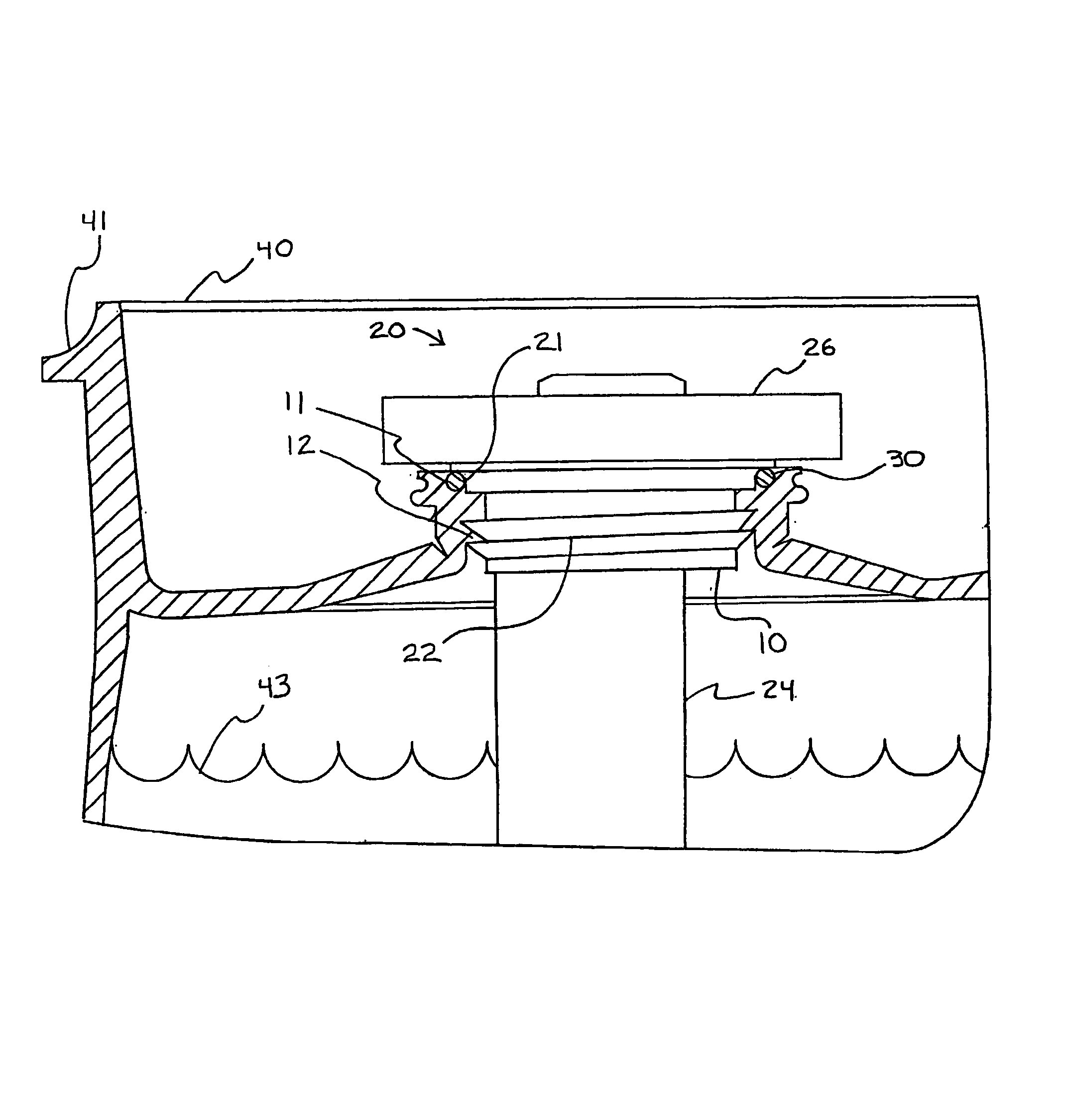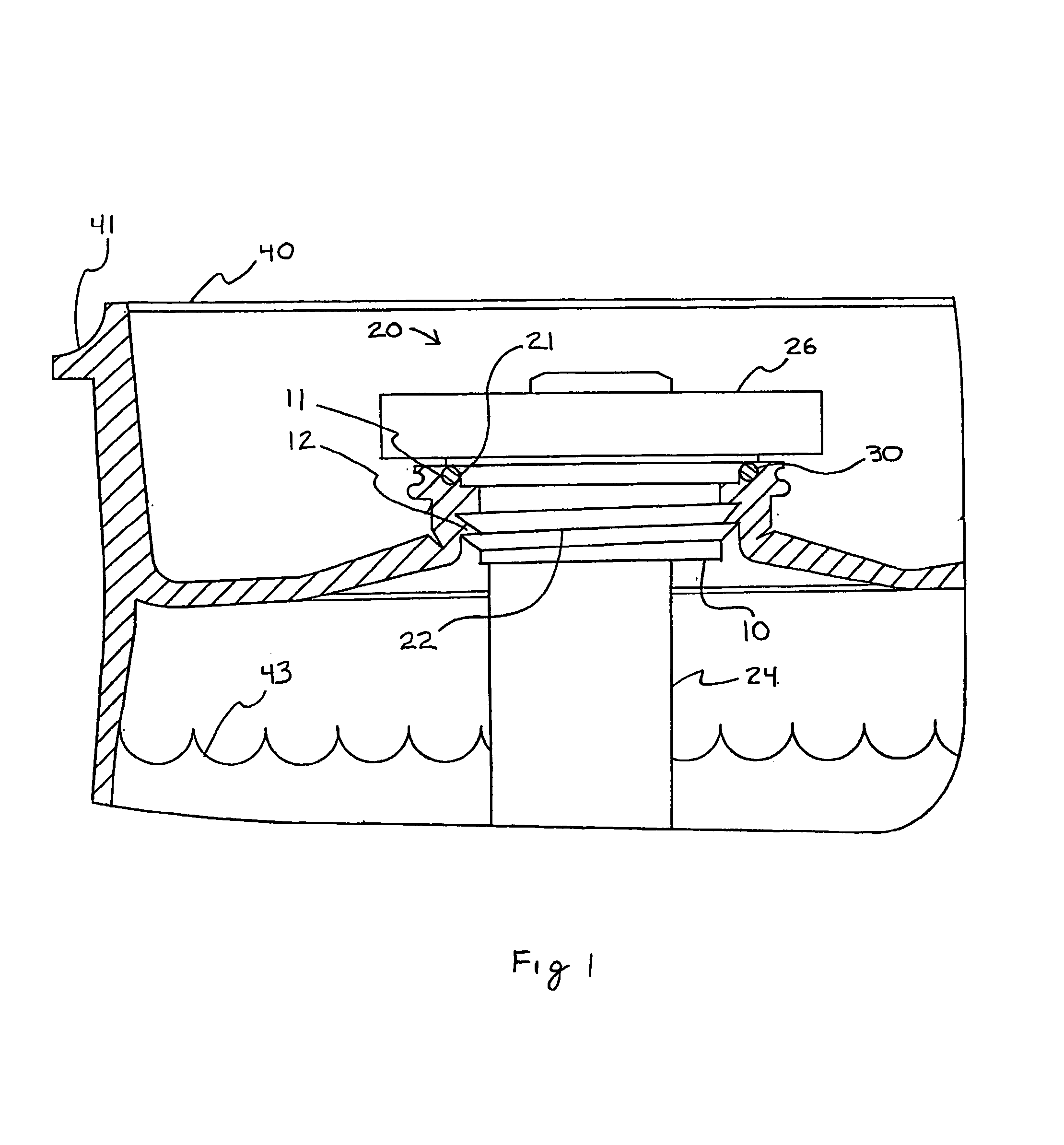Sealing system for ports of vessels used for corrosive fluids
a technology of sealing system and corrosive fluid, which is applied in the direction of transportation and packaging, packaging foodstuffs, packaged goods types, etc., can solve the problems of poor sealing, low resiliency of fluoropolymers, and limited flexibility
- Summary
- Abstract
- Description
- Claims
- Application Information
AI Technical Summary
Benefits of technology
Problems solved by technology
Method used
Image
Examples
Embodiment Construction
[0033]Referring generally to FIGS. 1–7, a vessel 40 is equipped with sealing system 41 including port 10, insert 20, and sealing ring 30. Port 10 has threads 12 and sealing surface 11. Insert 20 has insert sealing surface 21, insert threads 22, and insert stem 24. Sealing ring 30 is donut-shaped and made of a resilient polyolefin elastomer. Port 10 is placed on vessel 40 so that fluids may be moved in and out of the port. Port threads 12 threadedly engage insert threads 22 and compress sealing ring 30 against sealing surface 11 and insert sealing surface 21. Insert 20 is optionally equipped with inert stems 24 that allow communication between the critical fluid 43 contained in the vessel 40 and insert top cap assembly 26. Insert 20 is optionally equipped with openings 25 that allow communication of vessel 40 with the interior of insert 20. Insert sealing surface is adaptable to a variety of shapes including rounded (FIGS. 4–5) or squared (FIGS. 2–3). Other shapes may be used as appr...
PUM
 Login to View More
Login to View More Abstract
Description
Claims
Application Information
 Login to View More
Login to View More - R&D
- Intellectual Property
- Life Sciences
- Materials
- Tech Scout
- Unparalleled Data Quality
- Higher Quality Content
- 60% Fewer Hallucinations
Browse by: Latest US Patents, China's latest patents, Technical Efficacy Thesaurus, Application Domain, Technology Topic, Popular Technical Reports.
© 2025 PatSnap. All rights reserved.Legal|Privacy policy|Modern Slavery Act Transparency Statement|Sitemap|About US| Contact US: help@patsnap.com



